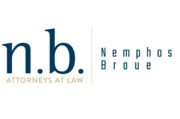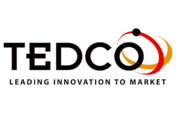
Baltimore is undergoing a technology renaissance. In recent years, the local economy has evolved into a robust, tech-driven ecosystem fueled by growing sectors, like biotechnology and cybersecurity. This growth has come with increased business activity, which is good news for entrepreneurs interested in a transaction, as both strategic and financial buyers are actively deploying capital in the region. As a result, business owners will not only be tasked with navigating the financial health of their companies, but also their own complex set of wealth planning needs that come with major business transactions.
For those who are planning for a business change in the new year, here are the top private wealth planning considerations to keep in mind.

Start planning early
All too often, I see business owners delay planning on the personal side while focusing entirely on prepping their business for a transaction. While understandable, this can be one of the most significant missed opportunities for an entrepreneur from a long-term wealth creation perspective. It’s especially common among tech entrepreneurs who are involved in rapidly growing businesses that may scale at a faster pace than non-tech players — leaving them with little time to plan for their own wealth once they’re at the deal table. The growing number of Baltimore-based entrepreneurs is no exception.
In the new year, tech entrepreneurs should prioritize having basic account titling and estate planning strategies in place prior to business negotiations. The sooner these are in place, the better because they can help increase tax efficiency should a liquidity event or other business change occur. Entrepreneurs and their private wealth team should start with the basics, such as having a basic will, financial and health care powers of attorney, and a revocable trust in place to lay the foundation for future private wealth planning needs.
For those entrepreneurs who already have basic estate planning documents in place but haven’t reviewed those documents in a while, the new year is a good time to revisit their existing estate plan with their private wealth team to make sure it is up to date. It’s tempting to want to “set and forget” an estate plan once all the documents are signed. But changes in the tax laws, family circumstances, and assets may require important adjustments to existing estate planning documents.
As a tech entrepreneur builds this foundation, they should also consider risk mitigation strategies early on and ahead of a wealth-building event.
Limit your liability
Risk mitigation is an important component of protecting wealth.
For entrepreneurs who are leading rapidly growing companies, like those in the tech space, the sudden increase in wealth can increase the risk of civil litigation. Certain types of insurance, like umbrella insurance, could be considered as a first line of defense in mitigating potential risks that aren’t covered in other insurance policies.
Business interruption insurance is another option that can help keep your business (and wealth) on track in the event of a disaster, like the floods or hurricanes that impact the coast. In the event of a disaster that causes physical loss or damage and impacts business income, business interruption insurance can replace some of the income lost — which ensures employee wages aren’t halted or decreased.
Lastly, reviewing key person insurance is wise to ensure coverage levels are still adequate and key executives and co-founders are covered.
Plan for post-transaction wealth needs
With the basics of a plan in place, the next step is to determine what percentage of an entrepreneur’s assets should be utilized in estate planning structures. An entrepreneur can think of their current and future wealth in two categories: core assets and legacy assets.
Core assets can be defined as the amount of wealth an entrepreneur should have available in structures and investments that are relatively easy to access and can be used to provide for all lifestyle needs of the entrepreneur post-transaction. Any additional capital above an entrepreneur’s “core assets” can be considered legacy assets. This is the amount of money that can be used for other priorities, such as wealth transfer planning for children or grandchildren, charitable giving or future business endeavors. And when it comes to assets that pass to children or grandchildren, creating trusts to protect those assets is often advisable and may even achieve tax savings.
For tech entrepreneurs interested in maximizing their philanthropic impact, there are many vehicles to keep in mind to optimize your contributions to charity, such as creating a private foundation or utilizing a donor-advised fund. Both of these charitable giving strategies can be used to ensure donations align with an entrepreneur’s values. Giving back to Baltimore-based organizations is one way to do that and see your impact in your own backyard.
Unlike any other city in the mid-Atlantic region, Baltimore has a unique conglomeration of tech entrepreneurs and multi-generation family businesses that have helped sow fertile ground for continued growth. As tech entrepreneurs look toward the exciting year ahead, now is the time to gather your team of advisers to have a financial plan in place for anything that’s ahead in 2022.
Wes Slagle is mid-Atlantic region head at Goldman Sachs Private Wealth Management.










